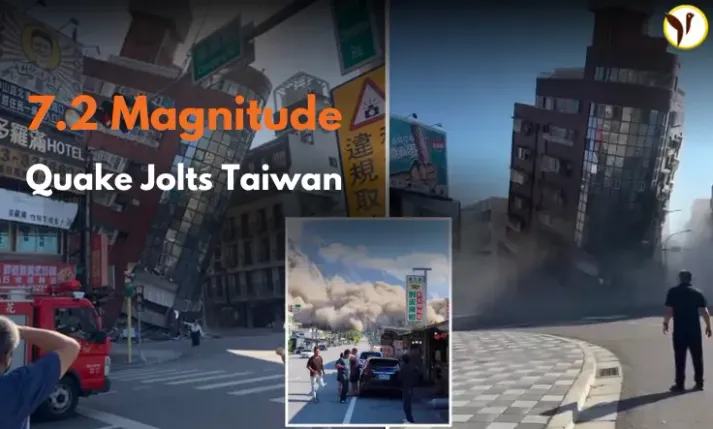Early today, Taiwan was hit by a strong earthquake with a magnitude of 7.2, which resulted in extensive destruction and the regional issue of a tsunami warning. Several buildings collapsed as a result of the earthquake, which had its epicenter in eastern Taiwan, trapping a number of people beneath the debris.
The US Geological Survey estimated the magnitude of the earthquake to be 7.5, however reports from Taiwan's earthquake monitoring agency put it at 7.2. Not only did the earthquakes occur in Taiwan, but they were also felt in other nations like Japan and the Philippines.
Sadly, at least four people have died in the accident, and about sixty more have been injured. Three people who were hiking through the hills surrounding the impacted area were among the casualties; they were crushed to death by stones.
Referring to the disastrous earthquake of 1999 that took hundreds of lives, Wu Chien-fu, the chairman of Taipei's Seismology Center, described this one as the most powerful to impact Taiwan in the last 25 years.
More than 26 structures collapsed as a result of the powerful earthquake, especially in the epicenter city of Hualien. People who are stuck in the debris are being freed by rescue efforts that are presently in progress.
Furthermore, the earthquake triggered tsunami warnings in Taiwan, Japan, and the Philippines, prompting authorities to issue evacuation advisories for residents along coastal areas. The Japan Meteorological Agency predicted waves of up to 3 meters following the quake, with initial reports indicating the arrival of a 30 cm tsunami on Yonaguni Island.
Despite the widespread destruction, the Taipei city government reported minimal damage to infrastructure within the capital. Public transport services, including the Taipei City MRT and the country's high-speed rail network, resumed operations shortly after the earthquake.
Furthermore, vital sectors of the economy, such the Southern Taiwan Science Park, which is home to important semiconductor firms like Taiwan Semiconductor Manufacturing Company (TSMC), carried on with minimal interruption.
Emergency services are on high alert as the impacted areas struggle with the fallout from this natural disaster, stressing the value of being ready and resilient in the face of such tragedies.
The fragility of seismically active areas is brought home by this earthquake, which also emphasizes the need for effective disaster management plans to reduce risks and protect people and property.







